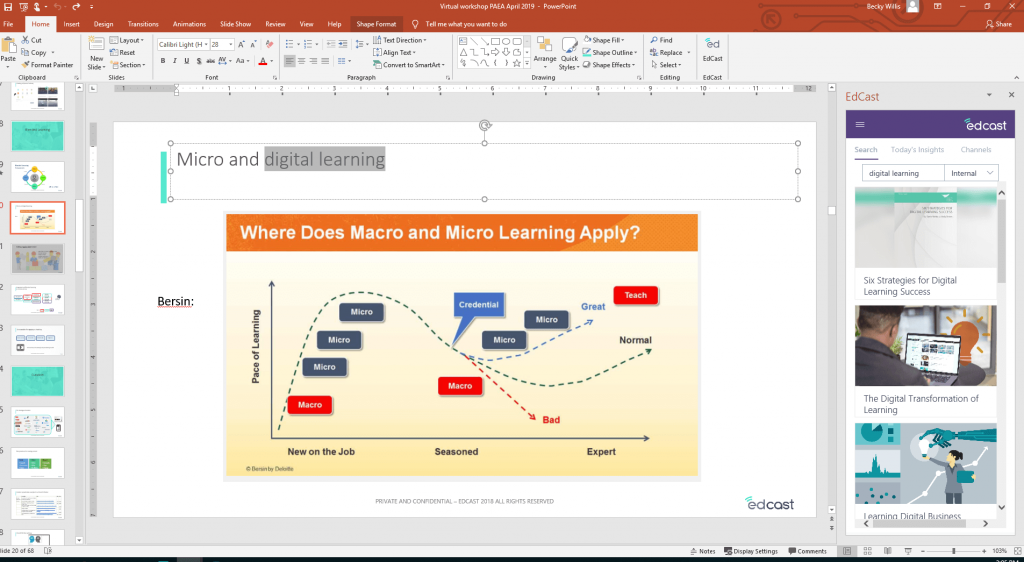In June of 2018, Josh Bersin wrote an article about the next big step for learning after Digital Learning: Learning in the flow of work. He described how we had evolved through the years and why we are at another inflection point. Looking at all that is changing at work and how the pace of work and learning keeps rapidly changing, he described the next step we all need to address is to put learning right where the employee is.
Let me set some context. I talk a lot about digital learning and how we need to embrace those concepts in the enterprise. The three shifts that are shaping how we work and live drive us to digital learning:
- The workforce is changing
- The work is changing
- Tech is changing everything
Digital learning enables a number of solutions to address these shifts. We can incorporate microlearning, blend informal learning, curate mixes of content, allow user-generated and social input as well as take advantage of technology like Artificial Intelligence and mobile. Digital learning also provides us with the platform that brings in the type of user experience that employees expect, the EdCast LXP.
That is great and we see where having a great Learning Experience Platform like EdCast makes digital learning really work in the enterprise. We engage learners, making it easy to find the right answer and learn. But what about that next step that Josh suggests?
Defining Learning in the Flow of Work
In the enterprise, we see learning challenged every day by time. People are busy and they need answers now. They need to build skills, knowledge and solve moments of need. Enterprises have been adding an LXP with all the tools and great user experience, but how can that be even better?
Build the solution right into what they do every day. Put that platform in the tools they use all the time. Research from LinkedIn, O’Reilly and Bersin shows that people are willing to learn from others, willing to self-direct learning and have moments of need to get knowledge. Make it even easier. Respect their need to save time.
So, we need to not only provide a great platform, we need to answer those moments from within the apps that they use.

Use Cases for learning in the flow of work
If it is about making the most of the time that we spend working, that time is best served in the primary applications we use to accomplish our tasks. I am in Microsoft PowerPoint and Word as well as Slack most of the day. If I run into a concept or a word that I want to learn more about, for example, digital learning, in a PowerPoint, I can simply highlight those words, bring up the EdCast widget from the ribbon and get answers from EdCast in PowerPoint.

The AI in EdCast will read the highlighted word and search trusted resources for content related to that word. Simple and fast. No need for me to leave my primary app.
Other examples:
- Salespeople are in Salesforce.com all day long. Why not embed content into SFDC that will aid them with discovery questions or tips on how to close?
- Knowledge workers are in Microsoft Office all day long. Why not allow them to highlight something in Word or other apps to look it up?
- Developers and others use Slack, let them have a bot to ask questions
- Enterprise groups are using Microsoft Teams or Facebook Workplace. Give them a bot to search for knowledge and learning.
These use cases are in play today. EdCast works within these and other applications that enable workers to get the knowledge they need quickly, without leaving the app that they are using. Now you can
design answers and build pathways that will aid users right as they work.
Why do I want to add learning in the flow of work?
Many employees are victims of technology overload. Lots of platforms that they use involve new tabs, new learnings, new passwords and behavior. People need answers to their moment of need while they have it. Today, it is not enough to just have a great LXP where they can upskill and learn from each other. That platform should also be connected into the vary apps they use every day. Then that search, that activity is tracked and managed in the LXP.
Just as the LXP provides a simple front door to learning, EdCast can now give users a new way to learn faster and more efficiently, right from what they do all day. Keep it simple, make it part of their everyday job and a culture of learning follows.
This is the next step to digital learning and EdCast can do it today.



